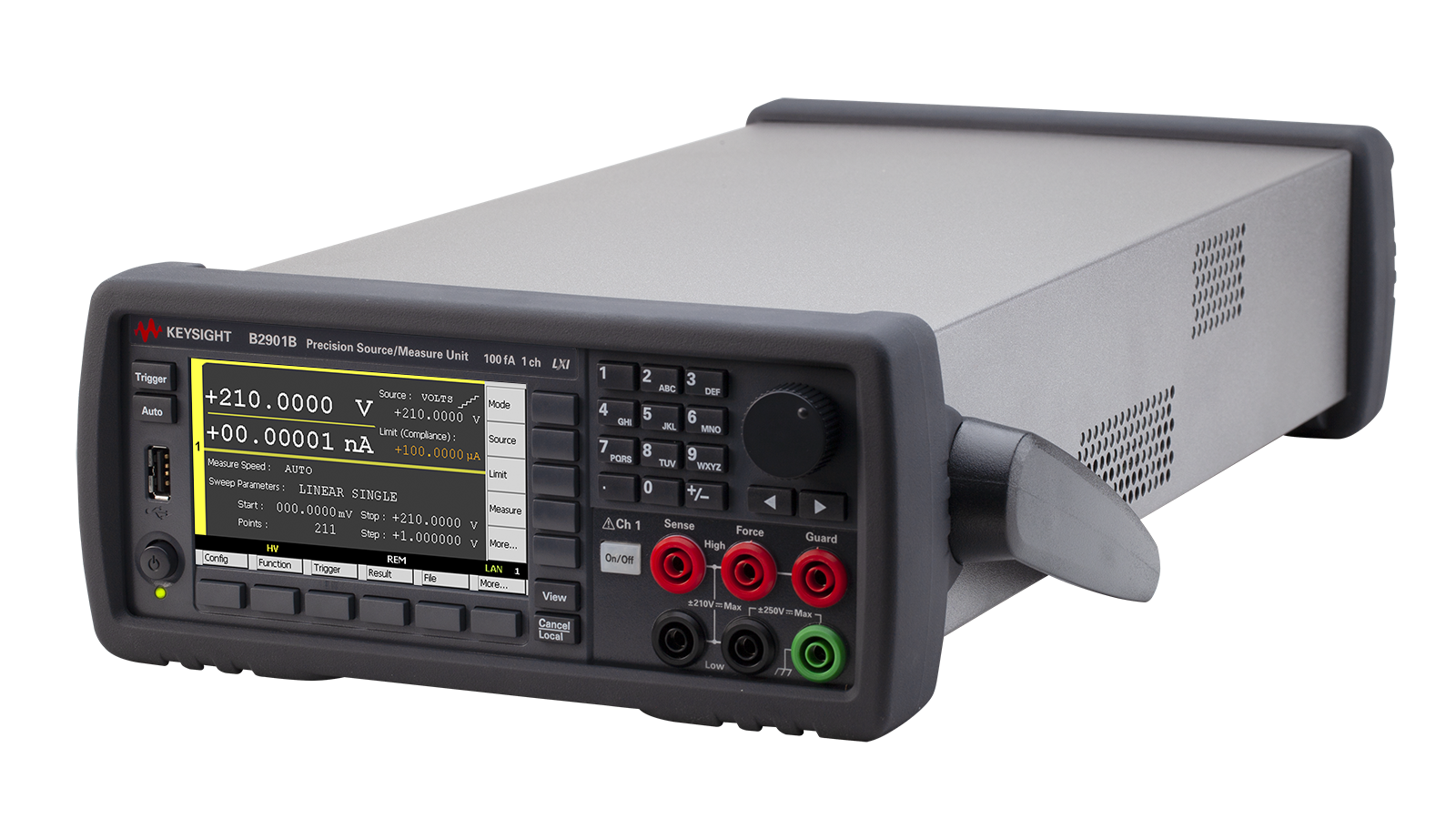What are you looking for?
Source / Measure Units
High Accuracy. High Resolution.High Performance. High Density.

Source Measure Units for All Your Needs
Keysight’s source measure units (SMU) or source meters range from precision, application-specific, and general-purpose to basic instruments. Our SMUs enable the streamlining and automation of low-power integrated circuits, automotive systems, and other complex systems for efficient, reliable, and repeatable testing.
This way, you can perform quick IV curve measurements without impacting test parameters, voltage and current ranges, test sequences, or criteria set by compliance standards.
Flexible Solution for Faster Workflows
Remove organizational test challenges with the PZ2100 high-channel density precision SMU solution. Meet all your evolving test system requirements with the 5 available source meter module options, which are flexibly configurable and upgradable in the 1U, 4-slot mainframe. Address your application-specific needs with any module combination, including high-speed, high-resolution, and high-density SMUs. This flexibility reduces your system bring-up time while removing the need for multiple capital investments for every new project.
Find The Source Measure Unit That's Right For You
Related Use Cases
Learning Materials on Source Meters
Learn how a source meter helps you overcome key challenges in application-specific tests, including low-power integrated circuits tests, low-current LED tests, VCSEL sensor and module tests, narrow-pulsed LIV tests, DC bias sourcing tests for optical receivers and modulators, datacenter applications, and more.

Efficient, Repeatable Device Characterization
Keysight's EasyEXPERT Group+ Software brings you efficient and repeatable device characterization with ready-to-use measurements functions.
- Multiple modes and features for quick setup, execution, and analysis
- Built-in database (workspace) records test data automatically
- Remote control function supports remote execution of application tests
- Included with most Keysight source meters / source measure units
Workflow Software for Simplified Automation
Quick and Easy Source Meter Control Software
Keysight instrument control and power supply software accelerate your research, development, and design verification by quickly and easily executing synchronous current-voltage (IV curve) measurements without programming, immediately reviewing test results on graphs and tables, and efficiently generating reports.
- Track and record your source meter output to understand the impact of power draw for specific events.
- Connect and control your source meters through the cloud.
- Export data to popular tools, such as MATLAB, Microsoft Excel, or Microsoft Word, for further analysis.
Featured Resources
Source / Measure Unit FAQs
The term source meter (or sourcemeter) and source measure unit (SMU) can be used interchangeably. A source meter is an instrument that measures direct current (DC) or voltage while simultaneously sourcing / supplying or sinking / receiving them.
A source meter combines the functionalities of a power supply and a digital multimeter. Unlike a power analyzer, an SMU typically does not have any oscilloscope or signal generator features to generate waveforms and view them in real-time. However, some specialized SMUs, like the PZ2100 series, have built-in digitizers to characterize response waveforms and pulsers to generate pulsed waveforms. In terms of performance, source meters are very high-speed instruments with very fast settling times compared to other instruments.
The regular power supply mode is considered a first-quadrant operation where both the voltage and current are positive. A source meter or an SMU behaves as follows in each of the quadrants:
- In the first quadrant, the source meter is a source with a positive voltage across it and is supplying a positive current from its output terminal.
- In the second quadrant, the source meter acts as a load with a positive voltage across it. It sinks or receives current from the DUT at its output terminal.
- In the third quadrant, the source meter is again a source supplying current, but its polarity is the opposite of conventional polarity and hence negative. That means the return terminal is set at a higher voltage than the output terminal but without changing the wiring to the DUT.
- In the fourth quadrant, the SMU again acts like a load. The voltage is negative, which means the return terminal is at a higher potential than the output terminal. However, the current flows conventionally.
An SMU or a source meter combines the functionality of a power supply (or power source), electronic load, voltmeter, and ammeter. It can both source and sink power. This is termed as operating in all four quadrants of the voltage-current plane. Source meters can rapidly reach set voltages or currents compared to other instruments. The typical settling times of good SMUs are of the order of tens to hundreds of microseconds. A critical capability of a source measure unit, which is essential for many characterization tests, is its ability to rapidly transition between different source and sink modes to simulate real-world conditions.
The compliance voltage is the configurable maximum limit on the measured voltage. If the voltage goes above this high-voltage limit, the source meter can be configured to quickly cut off power and shut down to protect both the instrument and the DUT. Similarly, there is also a compliance current limit to protect the SMU and DUT from high currents.
Want help or have questions?























